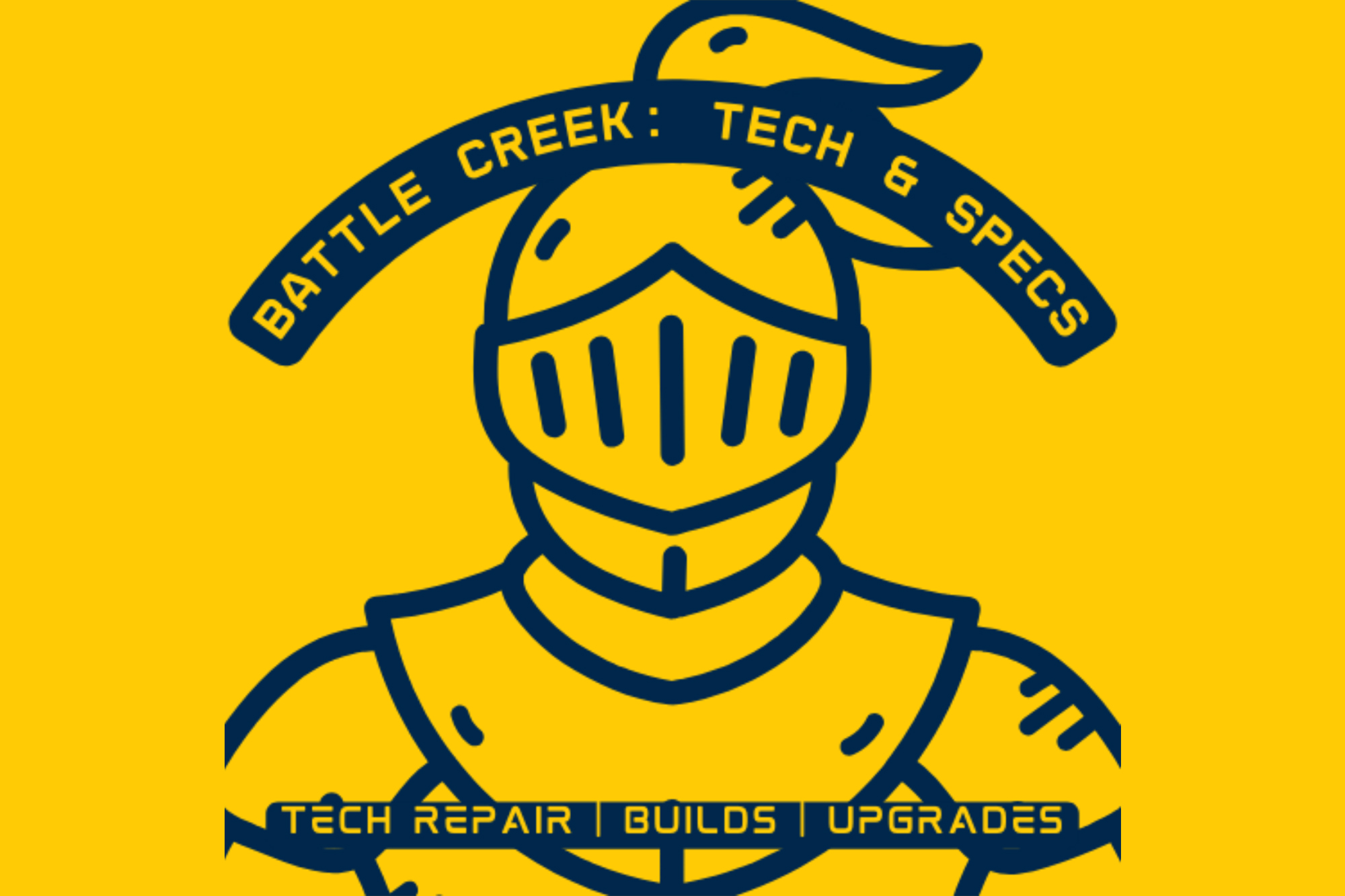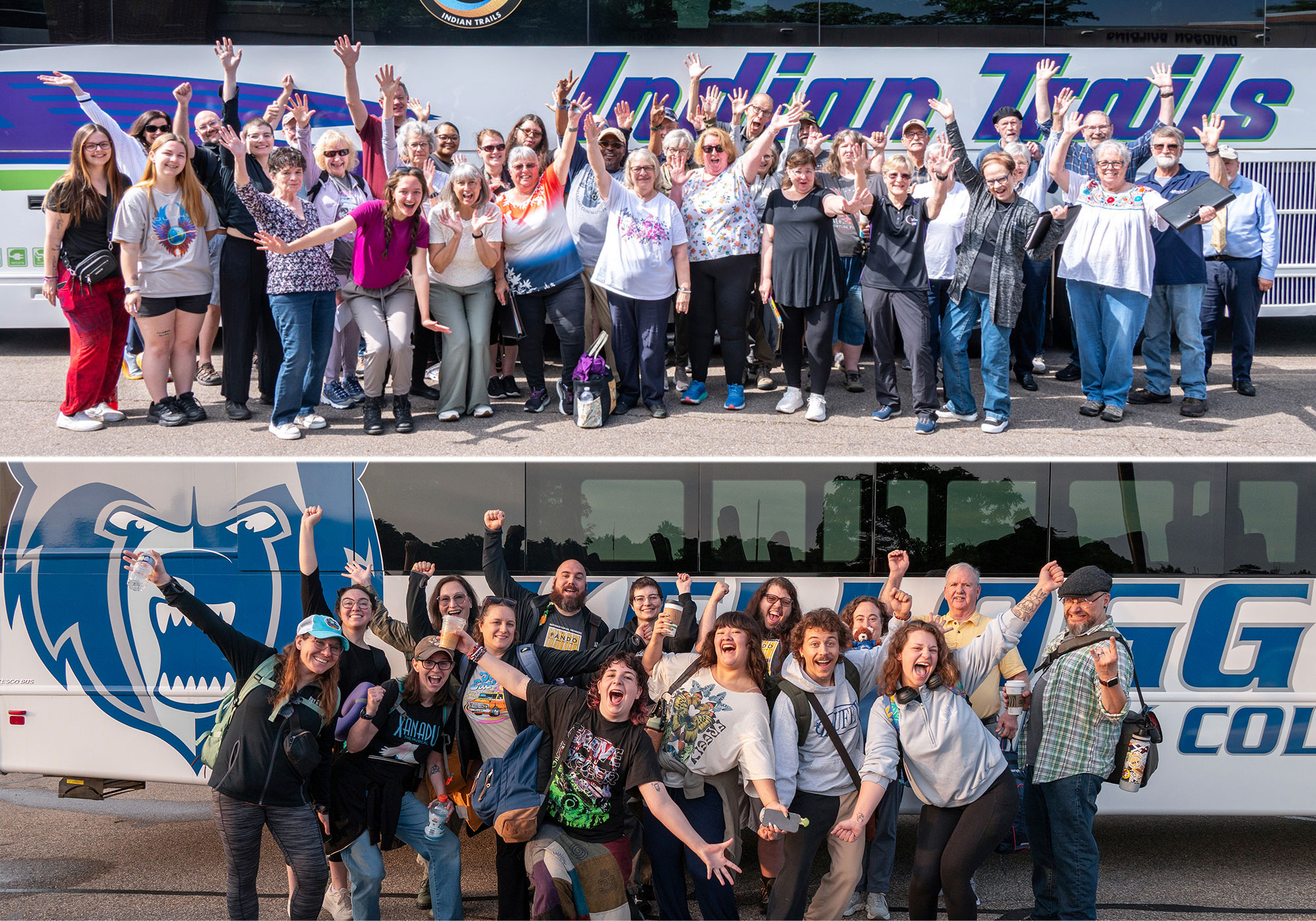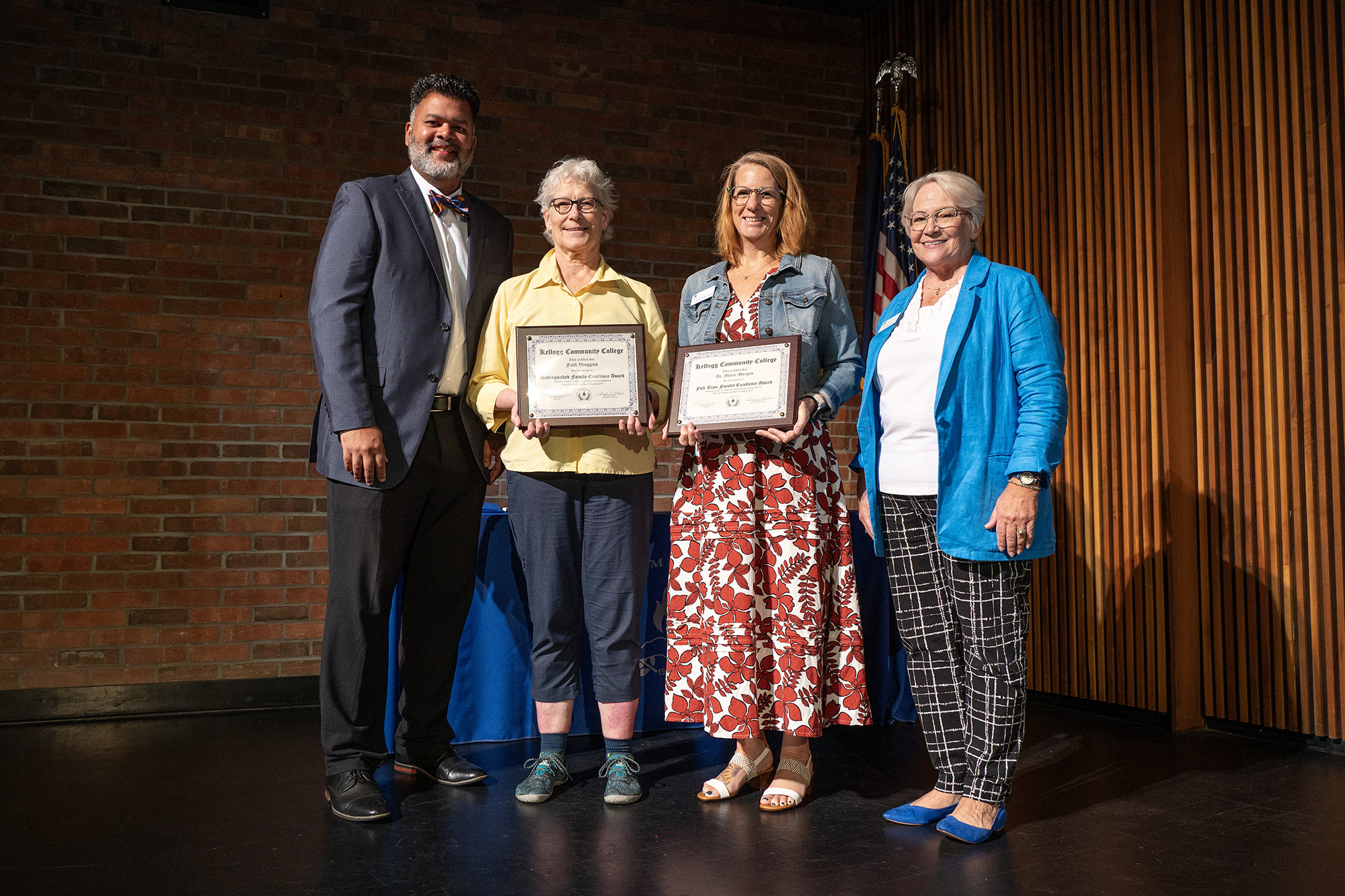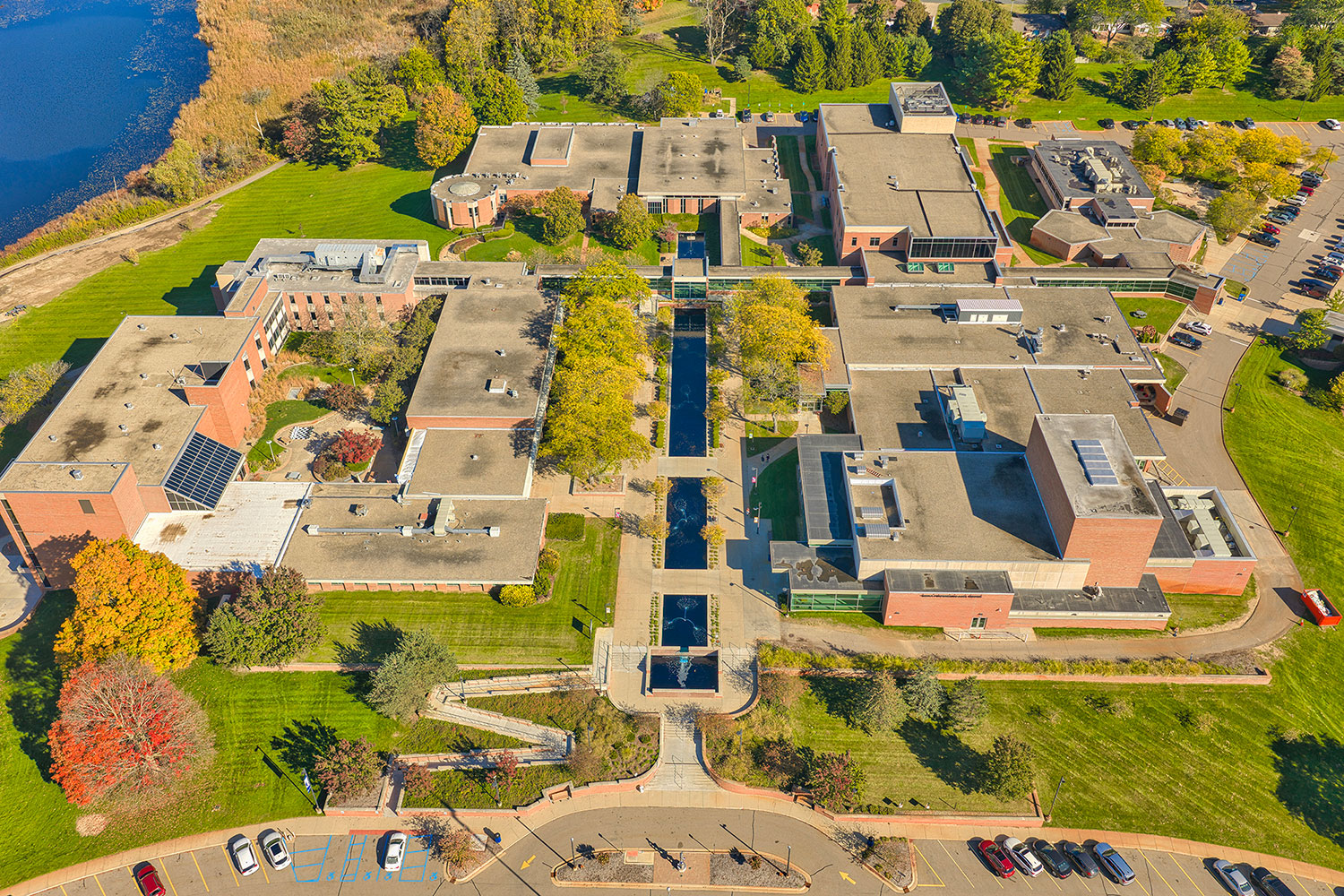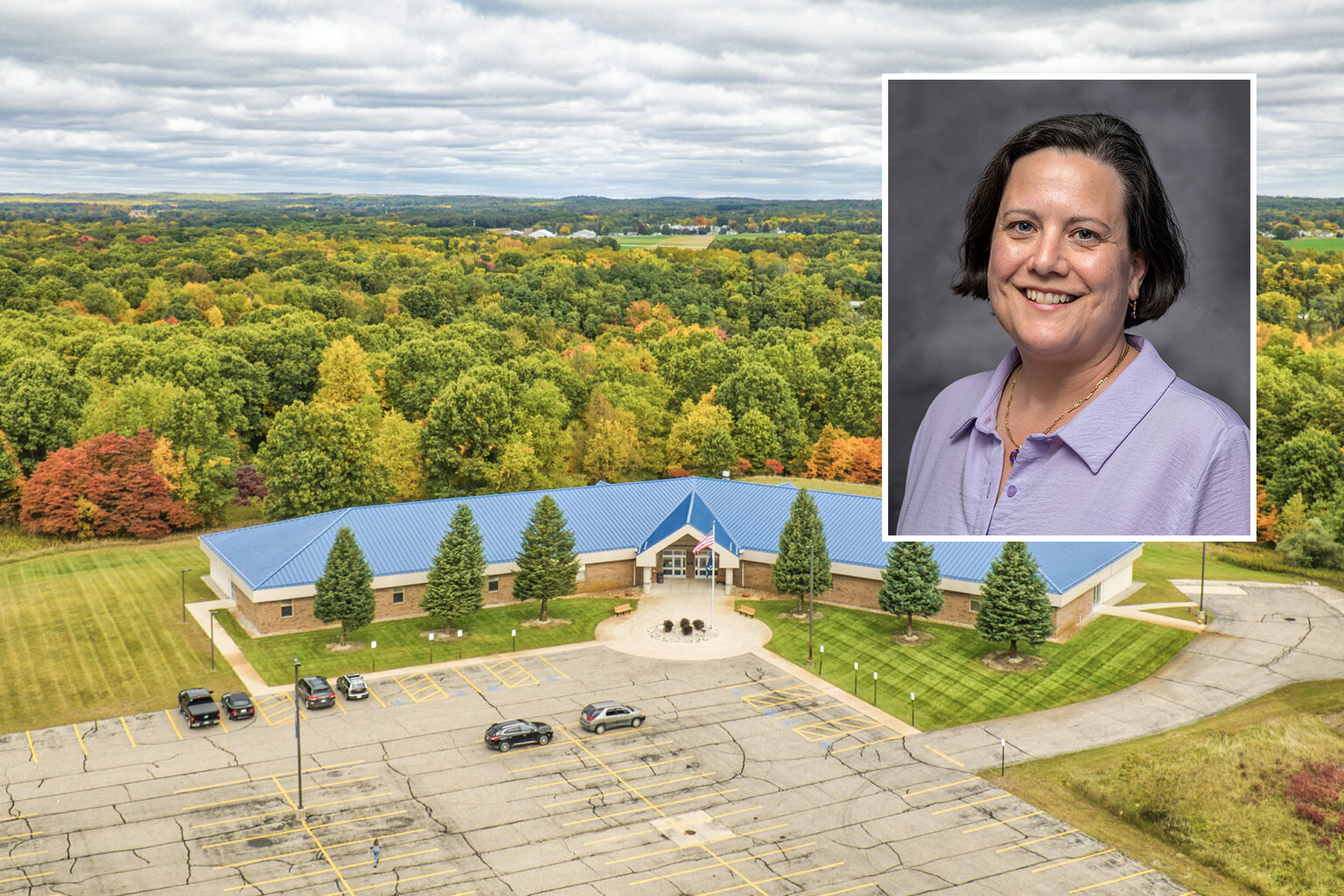Lights flash as the ambulance rumbles to a stop. Inside, paramedics prep their patient before the back doors swing wide and the first medic steps out, turning to assist her partner lift the gurney as they transport a patient to his new destination.
But these paramedics are special – they’re Kellogg Community College students, training for the field. And the “ambulance” and “patient” are educational simulators, part of a training scenario underway in the College’s Emergency Medical Services Sim Lab.
Here, on KCC’s North Avenue campus in Battle Creek, EMS students practice for their future career via hands-on “simulations” involving state-of-the-art tools, including a variety of lifelike patient manikins and a brand-new ambulance environmental simulator.
The lab also includes realistic living room and hospital environments, allowing students to practice full emergency calls from the initial call through onsite services to patient transport and delivery, as well as a real ambulance students use for outdoor calls.
All training is monitored via newly updated cameras, microphones and other sensors feeding content to an advanced control room in the lab, where more than a dozen large-screen, high-definition monitors display the simulations in real-time for instructor review.
The control room – which EMS Program Coordinator Clark Imus calls “Mission Control” – also allows instructors to record student progress through the entire training process. The resulting video is then viewed by students during a debriefing session, where they can see what went right and wrong and where they might improve in the future.
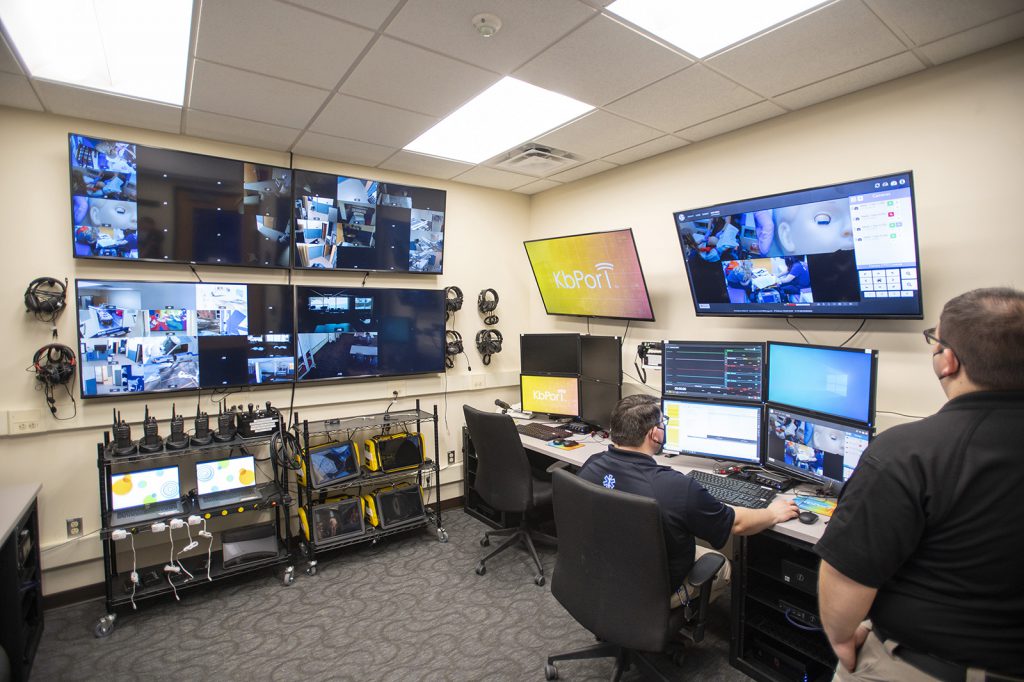
“It is one of the most state-of-the-art sim labs in the state, potentially even in the Midwest,” Imus said. “There’s not another school in the state that has anything nearly close to this.”
The EMS Sim Lab at KCC has long been the envy of its peers, but the new renovations and upgrades this fall – including the new ambulance simulator, control room tech and a new augmented-reality enabled obstetrics manikin that can deliver manikin babies – take the lab a step further.
“We basically took the fidelity and the realism and increased it even more,” Imus said.
The centerpiece of the project is the ambulance environmental simulator, which replicates the experience of traveling and treating patients in an actual ambulance.
Like the rest of the lab environments, the ambulance simulator is outfitted with high-definition cameras and audio. It also features special ventilation for better airflow – especially important given current COVID concerns – as well as emergency lights and a unique, pneumatic-based motion system that lets it recreate realistic road movements during training simulations.
“Everything an ambulance can do, it can do,” Imus said. “Students will start their simulation there and from the ambulance they’ll move into another environmental simulator, like the living room or the hospital, and then from there they’ll go back to the ambulance for transport.”
“All of the environmental conditions, we can create.”
Together, the upgrades lead to better-training opportunities for KCC students, which means higher-quality EMS professionals treating patients in our community.
KCC offers several certificate opportunities via the EMS Program, including training for basic emergency medical technicians, medical first responders, paramedics and other EMS professionals. The program also offers an Associate of Applied Science degree in Emergency Medical Services.
For more information, visit kellogg.edu/ems.
This article first appeared in the March 2022 edition of BruIN magazine. For more information visit kellogg.edu/bruin-magazine.







